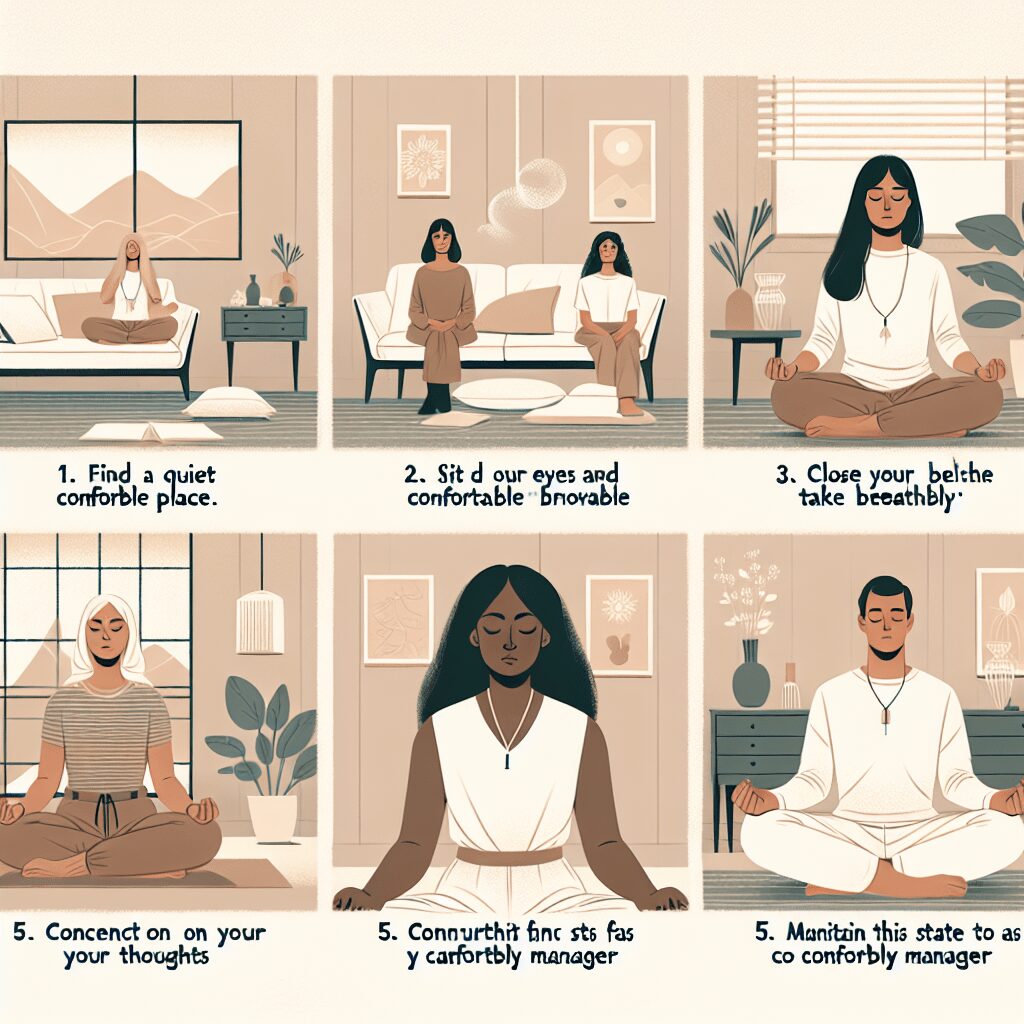
Prioritize your mental well-being daily. Enhance your life by nurturing your mental health with the Smart Meditation app. Break free from stress, alleviate anxiety, and enhance your sleep quality starting today.
How To Buddhist Meditate?
Unlocking the Path to Inner Serenity: A Guide to Buddhist Meditation
In a world that constantly buzzes with activity, finding a moment of peace can feel like searching for a needle in a haystack. However, the ancient practice of Buddhist meditation offers a beacon of tranquility and insight amidst the chaos. But how does one embark on this transformative journey? Buckle up, because we’re about to dive deep into the heart of Buddhist meditation, unraveling its practices, principles, and the profound impact it can have on your life.
The Foundation of Mindfulness: Where It All Begins
First things first, let’s get our ducks in a row. Buddhist meditation isn’t a one-size-fits-all deal. It’s an umbrella term that encompasses a variety of techniques, including Vipassana (insight meditation), Metta (loving-kindness meditation), and Samatha (concentration meditation), among others. However, at its core, the essence of Buddhist meditation revolves around cultivating mindfulness and awareness.
Step 1: Setting the Stage
Before diving headfirst into meditation, it’s crucial to establish the right environment and mindset. Find a quiet spot where you won’t be interrupted. You don’t need to be in some fancy schmancy, candle-lit room filled with the scent of incense (unless that’s your jam, of course). A comfortable corner in your bedroom will do just fine. Sit comfortably, with your back straight but not stiff. You’re not auditioning for the role of a statue, after all.
Step 2: Tuning In to Your Breath
Ah, the breath – our ever-reliable anchor to the present moment. Gently close your eyes and bring your attention to your breathing. Notice the sensation of air flowing in and out of your nostrils, or the rise and fall of your belly. This isn’t the time for breath-holding Olympics; just breathe naturally. If your mind starts to wander off (and it will), gently nudge it back to your breath. Rinse and repeat.
Step 3: Broadening Your Awareness
Once you’ve gotten the hang of breath-focused meditation, it’s time to broaden your horizons. Start becoming aware of sounds, sensations, and even thoughts that float through your mind. The key here is not to latch onto any of these experiences but to observe them with a gentle, non-judging awareness. Think of it as people-watching, but for your own mind.
The Ripple Effects: Beyond the Cushion
Alright, so you’ve started dabbling in Buddhist meditation. But what’s the big deal? As it turns out, the benefits of this practice extend far beyond those blissful moments of silence. Regular meditation has been linked to reduced stress, improved mental clarity, enhanced empathy, and a deeper sense of overall well-being. It’s like hitting the refresh button on your brain.
Moreover, Buddhist meditation encourages a profound exploration of the self and reality. It invites practitioners to question the nature of their thoughts, feelings, and experiences, leading to insightful revelations about the interconnectedness of all things. In short, it’s not just about chilling out; it’s about waking up to life.
Embarking on the Journey
Embarking on the path of Buddhist meditation is akin to setting off on an adventure of self-discovery and transformation. Remember, it’s a marathon, not a sprint. Patience, commitment, and a healthy dose of curiosity are your best companions on this journey.
So, why not give it a whirl? Who knows, you might just find that the peace and clarity you’ve been searching for was within you all along. After all, as the saying goes, “Peace comes from within. Do not seek it without.”





